Originally released on
CONTACT
John Gerzema
FEATURING
A study conducted on behalf of Protocol by the Harris Poll found that while most U.S. adults have not used augmented reality or virtual reality technology, a notable portion are interested in trying AR and VR. The study also found younger U.S. adults were more familiar with the metaverse than older U.S. adults, and that Americans are unsure about the future of the metaverse’s regulation.
While most U.S. adults have not used AR or VR tech, many are still interested in adopting the technology. Early adopters of AR and VR tech skew younger.
Three quarters (72%) of U.S. adults have not used any augmented reality technology.
Currently, 16% of U.S. adults have not heard of AR technology. Part of this may be due to current product hesitancy or disinterest: only a quarter (25%) of U.S. adults have no interest in using AR technology. On the other hand, younger adults are more willing to embrace AR, especially Millennials. One in three (32%) Millennials currently uses AR technology (compared to 23% of Gen Z, 14% of Gen X, 6% of Baby Boomers).
Although more hesitant, other “young” generations are also open to AR. 38% of Gen Z and 38% of Gen X have not used AR technology, but say they are interested in doing so.
Two-thirds (68%) of U.S. adults have not used any virtual reality technology.
Currently, 12% of U.S. adults have not heard of VR technology. Hesitancy and disinterest in VR is similar to AR. Again, just a quarter (26%) are not at all interested in trying VR. Youth interest is also higher for VR. Three in five (61%) Gen Zers and 45% of Millennials have used VR technology at least once (compared to just 31% of Gen X and 10% of Boomers).
Users of AR and VR technology have had enjoyable experiences with some of the more common products. The most used VR and AR technologies are:
VR headsets (e.g., Oculus, HTC Vive) (61% used; of those, 88% had a positive experience)
Mobile VR apps (33% used; of those, 66% had a positive experience)
AR social media tools (31% used; of those, 81% had a positive experience)
VR motion controllers (e.g., standard hand controllers, wands, wheels) (30% used; of those, 77% had a positive experience)
Unsurprisingly, younger people are more familiar with the metaverse than their older counterparts. Younger people also say more often that the metaverse will enrich their lives.
Two in three (62%) U.S. adults said they were not familiar with the concept of the metaverse before taking this survey.
That said, younger generations are more familiar with the metaverse. 55% of Gen Z and 60% of Millennials are at least somewhat familiar with the concept of the metaverse (compared to just 35% of Gen Xers and 17% of Boomers).
Regardless of familiarity levels, even after reading a description defining the metaverse, 52% of U.S. adults feel overwhelmed by the concept. Similar to other new technologies – most notably NFTs – such sentiment reveals a population that needs a seemingly complex and abstract topic to become more simplified and relatable in order for adults to embrace it.
Four in ten (37%) U.S. adults agree that the metaverse would be more fun than real life, and 38% agree that the metaverse would make their life better.
These numbers climb for Millennials. 53% agree that the metaverse would be more fun than real life, and 51% agree that the metaverse would make their lives better. These numbers also climb for people who were familiar with the metaverse before taking this survey. 54% agree that the metaverse would be more fun than real life, and 61% agree that the metaverse would make their life better.
U.S. adults are unsure about the future regulation of the metaverse. That said, a noteworthy share agrees that no one company should own all of the metaverse.
Overall, three in ten (27%) U.S. adults are not at all sure what group should regulate the metaverse, and another one in ten (9%) do not think the metaverse should be regulated. However, the vast majority of those previously familiar with the metaverse before taking this survey have an opinion of who should regulate the industry (92%).
Compared to just 19% of all U.S. adults, 28% of people who were familiar with the metaverse before taking this survey think metaverse and technology industry leaders should regulate the metaverse.
Those familiar with the metaverse say more often that regulation should be in the hands of users themselves. Compared to 14% of all U.S. adults, 21% of people who are familiar with the metaverse think metaverse users should be in charge of regulation. Across awareness levels, the U.S. government (11% all adults) and independent oversight committees (14%) were less popular regulatory options.
Despite controversy around the expanding power of big tech firms, only one in three U.S. adults (37%) say the metaverse should not be owned by any one company. Perhaps surprisingly, even fewer of those familiar with the metaverse before this survey feel this way (19%).
However, 63% of U.S. adults can see one company owning the metaverse. When asked who that one company would be, the top choices were Google (13%), Amazon (12%), Meta (11%), and Apple (10%).
For people previously familiar with the metaverse, the top choices shuffled slightly with Meta (17%) in the top spot followed by Google (16%), Amazon (15%), and Apple (13%). This could indicate a branding win for Meta among metaverse users and potential users.
The following companies had little support for ownership of the metaverse from U.S. adults:
Microsoft (7%)
Roblox (1%)
Snap Inc. (0%)
The Sandbox (0%)
Microsoft (7%)
For less established brands or brands that target younger audiences, a lack of overall brand awareness likely played a role in their lower position.
Methodology:
This survey was conducted online by The Harris Poll on behalf of Protocol during January 14-18, 2022, among 1,060 U.S. adults ages 18 and older. This online survey is not based on a probability sample and therefore no estimate of theoretical sampling error can be calculated. Figures for age, sex, race/ethnicity, education, region, and household income were weighted where necessary to bring them into line with their actual proportions in the U.S. population. Propensity score weighting was used to adjust for respondents’ propensity to be online. For more information, please contact Madelyn Franz or Andrew Laningham.
Download the full data tables here.
Related
Articles
In the News, Press Releases
Jun 13, 2025
Stagwell (STGW) Unveils Official News Network as an Extension of its Future of News Initiative, Allowing Clients Direct Access to Leading News Publishers
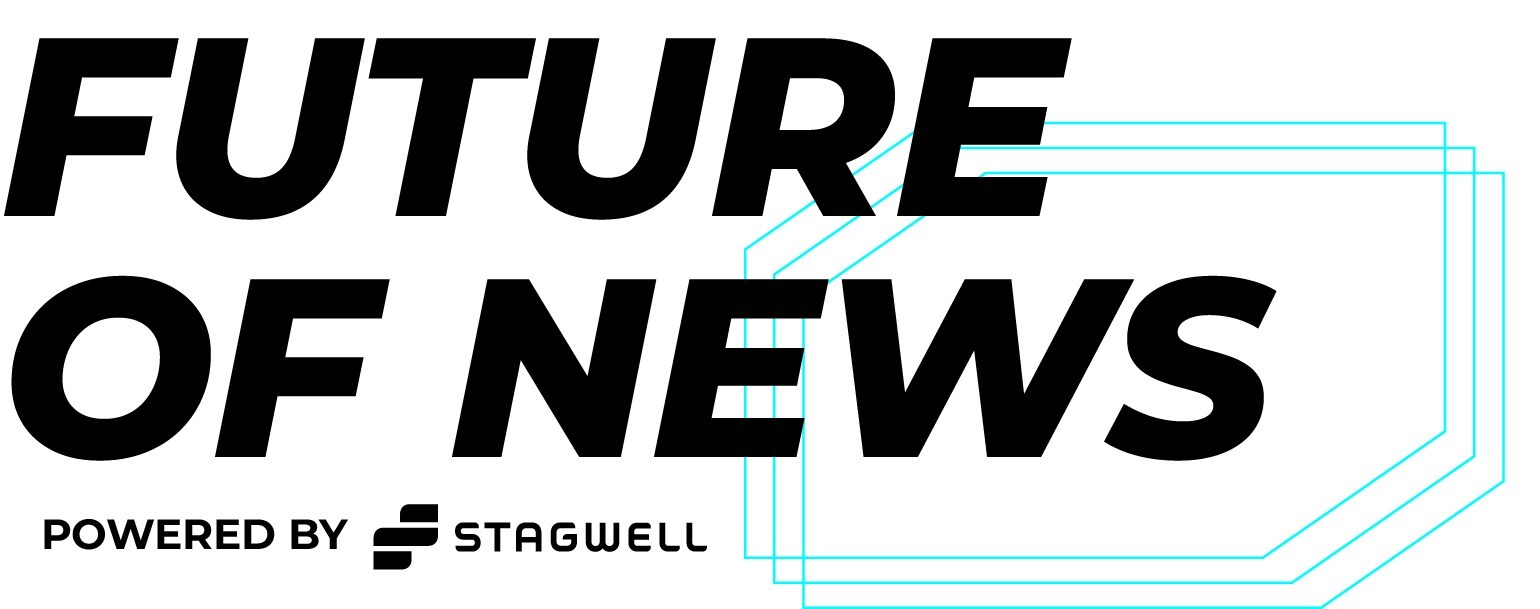
Artificial Intelligence, In the News, Marketing Frontiers, Press Releases, Stagwell Marketing Cloud, Tech
Jun 12, 2025
PRophet, a Stagwell (STGW) Company, Completes Integration of UNICEPTA, Launches Unified Brand and Enhanced Media Intelligence Offering

In the News, Marketing Frontiers, Press Releases, Stagwell Marketing Cloud, Tech
Jun 11, 2025
The Marketing Cloud Launches Cutting-Edge Platform to Simplify Marketing Workflows
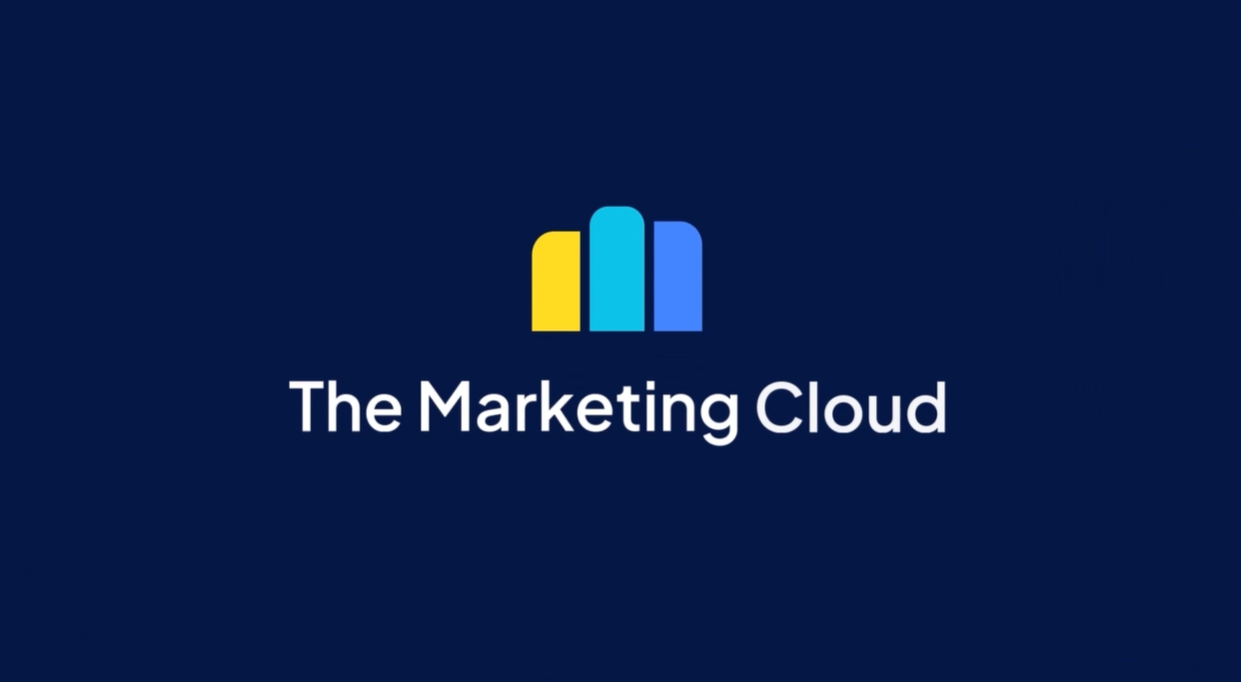
Newsletter
Sign Up
By Mark Penn, Chairman and CEO, Stagwell
and Josh Beatty, Founder and CEO, ARound
CONTACT
Mark Penn
mark.penn@stagwellglobal.com
FEATURING
Marketing Frontiers is a new series from Stagwell exploring the methods, mediums, and messes modern marketers will grapple with over the next decade as they chart transformation in the discipline. This January, Stagwell is exploring the new frontiers of Augmented Reality.
Event-based AR can help marketers attract audiences at scale for new forms of shared, blended, and branded experiences.
We tend to envision AR as a means of distraction but there is transformative power in combining the physical and the augmented for highly immersive, interactive experiences.
AR at live sporting events can help create persistent, relevant, and shared experiences that will engage casual fans while enhancing the experience for sports fanatics.
Augmented reality has transformed from a bespectacled fad to an emergent marketing frontier for modern brands in recent years. Still, there is still much work to be done to create AR audiences at scale, attracting the masses.
Why is it hard to scale AR? Because – to date – AR has focused on the individual. We believe that the transformational power of AR is in creating experiences that bring people together around a common place and purpose. Purely functional applications like seeing how a piece of furniture might fit into your home are useful but do little to attract the mass consumer audience AR needs to go mainstream.
What if instead we focus our AR experimentation on augmenting shared experiences like sporting events, in stadiums with captive audiences that are naturally some of the most enthusiastic consumer bases in the world? As sports leagues adapted to the pandemic, marketers learned consumers hunger for more dynamic engagement with their favorite teams and players. They want to get closer to the action, closer to the players, and bond with one another over experiences they’ll remember for a lifetime.
Let’s use AR to get there. We believe sports brands have a strong opportunity to power more immersive and meaningful experiences with the next frontier of augmented reality: event-based AR.
The promise of event-based AR is to bring content to context, providing for more immersive and meaningful experiences connected to the events and people around us. AR can fuel moments of catharsis for the consumer, creating powerful emotional connections to brands, stadiums, and other key fan and player locations.
We already know sports fandom is a lifelong affiliation. Augmented reality can help brands extend that fever into a new dimension, offering interaction, socialization and new forms of connection
ARound helps venues and retailers create augmented reality experiences for live events, bringing audiences together at scale where they can play, interact, and socialize in completely new and exciting ways.
‘Mario Party But With 30,000 People’
Sports marketers can use augmented reality to power stronger consumer experiences with fun, relevant, and shared brand moments.
The transformational power of AR is in creating experiences that bring people together around a common place and purpose.
Building Fun Moments
Every Thanksgiving, one relative is bound to recount an infamous fly-ball he caught from the seats at a baseball game growing up. And even the least sports-engaged Bostonian becomes a model hometown fan when the Patriots are due for more Super Bowl wizardry. Sports marketers know best that the memories fans make at sporting events are some of the most persistent experiences they’ll have in their lives.
So why not use AR to bring more of those experiences to a wider swath of fans?

Everyone might not be able to carry a flyball away with them as a lifelong souvenir, but every fan can experience moments that will turn into memories. With AR, fans in seats with lackluster angles can be brought into the action while players personalities can become larger than life, creating memorable moments that will dominate social media. Adding more experiential touchpoints via AR can make a standard Sunday game fodder for “remember when!” stories for years to come.
Serving Relevant Content
Using AR to add context to content can help brands further engage consumers on location, arming them with an agile new tool for building the compelling experiences that drive value. With event-based AR integrations, brands can adapt flexible content based on everything from proximity to the main stage to the affiliations of fans. Advertising in-game can be tailored, too, to reflect first-party inputs like a consumer’s favorite sports team, hometown, and more. Ultimately, the tech will serve as a powerful way to recapture and convert attention otherwise lost to consumers’ mobile browsing habits during live events.
Keeping fans engaged before, during, and after the game with personalized content enables a myriad of brand integrations. With just baseline first-party data input by users about team fandom, hometown, favorite players and preferences for merchandise, a whole universe of addressable AR content opens up, activated through their mobile devices.
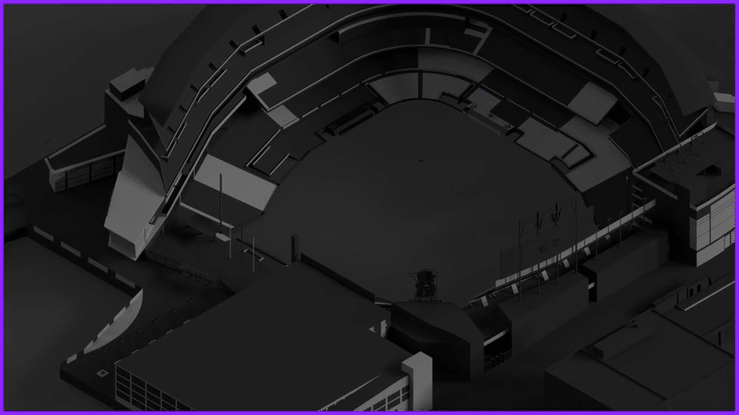
Creating Shared Social Experiences
Let’s be honest: while fans may be physically captive, of a sort, at in-person sporting events, it’s another game to capture and keep their attention. At the same time, sports is inherently social – something that positions it well to beat the AR trap of failing to scale by being mired in individual experiences. Leveraging AR to extend shared moments through every part of the game will help build closer connections between teams, players, and their fans, bringing talent on the field to life in multi-sensory, bigger-than-life arenas.
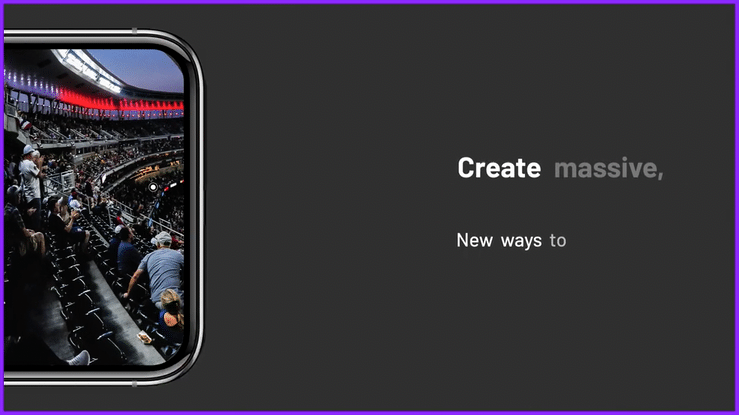
Layering gamified content, player stats and optional replays in AR during games can keep fans focused on and interacting with the field. Brands might stoke team rivalries with interactive competitions during games, with fans’ actions contributing to an aggregate team score. At the end of a game, fans from the winning team might get virtual collectibles or NFTs that build up to larger prizes with more and more engagement at AR-enabled locations, ultimately winning season passes or exclusive IRL merchandise. During intermissions, fans could open their phones to participate in competitions like tug of war fueled by the in-app engagement of 30,000 people, with rival team mascots scaled as AR avatars on the field. You can even imagine beloved mascots like The Phillie Phanatic or Mr. Met swarming the field with AR-doubles for intermission shows that extend beyond the physical to engage fans throughout the entire stadium, not just close to the field.
While our focus is ostensibly on AR moments connected to physical locations and powered by mobile, it’s not hard to see how marketers can activate AR-integrated apps or hardware to plug at-home fans into live sports.
Related
Articles
In the News, Press Releases
Jun 13, 2025
Stagwell (STGW) Unveils Official News Network as an Extension of its Future of News Initiative, Allowing Clients Direct Access to Leading News Publishers

Artificial Intelligence, In the News, Marketing Frontiers, Press Releases, Stagwell Marketing Cloud, Tech
Jun 12, 2025
PRophet, a Stagwell (STGW) Company, Completes Integration of UNICEPTA, Launches Unified Brand and Enhanced Media Intelligence Offering

In the News, Marketing Frontiers, Press Releases, Stagwell Marketing Cloud, Tech
Jun 11, 2025
The Marketing Cloud Launches Cutting-Edge Platform to Simplify Marketing Workflows

Newsletter
Sign Up
This week marked the National Retail Federation’s 2022 conference, the premiere summit of the world’s largest retailers. Stagwell was listening in, as well as talking with lead retail experts and practitioners from brands like Johnson & Johnson, AERIN, Bayer, Snap, and more.
So what do marketers need to know? We recap the top five trends and takeaways to emerge from the week below.
If you’d like to learn more, email Beth Sidhu. Interested in more retail insights? Click here for our retail report card and please sign up for more insights here.
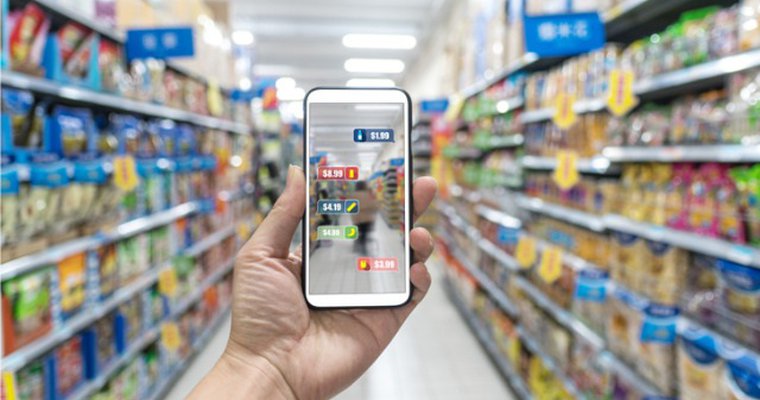
1. Blended Retail Experience is Here to Stay
The pandemic accelerated a new template for the shopper journey that sees consumers move frequently across brick-and-mortar and digital touchpoints. Consumers want to shop, browse, and discover on their own terms, using the full range of devices, delivery mechanisms, and in-store ecosystems available to them. Expect retail to continue to trend towards convenience – defined on the consumer’s terms – that is supported by digital layers that add function, streamline experiences, or collapse multiple aspects of the purchasing funnel. Marketers need to invest in seamless handoffs between touchpoints urgently.
2. Safety Will Keep Driving In-Store Shopping Behavior
With variants extending the pandemic for who-knows-how long, health and safety will continue to be top of mind for consumers. Telegraphing your brand’s investment into COVID-19 protocols without veering into the realm of pandemic theater/fearmongering is one way brands can remain in favor with today’s consumers. Marketers should ensure their messaging around safety connects with reality for employees, as the employee-as-brand-ambassador trend popularized by big box retailers like Walmart continues.
3. If Your Commerce Isn’t Connected, What Are You Doing?
Enduring supply chain disruptions will put additional pressure on retail shops to adapt technology and digital tools to further connect their enterprises. To keep apace with customer expectations for faster delivery and order fulfilment, brands need to adapt sophisticated inventory tracking and real-time retail dashboards, as well as look to further synchronize marketing and sales activities.
4. Social Commerce Gets a Lift From Live Streaming
Live commerce – a staple abroad but gaining traction across the U.S. – will mainstream in 2022 as brands need to bridge consumers’ platform and content experiences with their shopping habits. The models abound, from the 24-hour shopping livestreams that drive billions in sales during China’s major retail holiday, Double 11, to more curated influencer streams that tap into micro and nano influencers to tell the stories behind products in more authentic ways. This engagement renaissance will be powered by integrated payment portals, QR codes picture-in-picture digital displays, and other technology enabling a seamless step-through discovery to purchase.
5. Retail Cautiously Experiments with the “M” Word
In the absence of the technology infrastructure to support the much-buzzed about Metaverse, retailers are experimenting with what’s available now – mixed reality tools — to power exciting new experiences that tie the physical world to the digital world. Live events and retail supported by augmented reality can power more engaging shared experiences for consumers, while virtual tokens, avatar outfits, and other digital tokens can extend a brand’s product suite into this burgeoning new dimension of the web.
Related
Articles
Artificial Intelligence, In the News, Marketing Frontiers, Press Releases, Stagwell Marketing Cloud, Tech
Jun 12, 2025
PRophet, a Stagwell (STGW) Company, Completes Integration of UNICEPTA, Launches Unified Brand and Enhanced Media Intelligence Offering

In the News, Marketing Frontiers, Press Releases, Stagwell Marketing Cloud, Tech
Jun 11, 2025
The Marketing Cloud Launches Cutting-Edge Platform to Simplify Marketing Workflows

In the News, Press Releases, Thought Leadership
Jun 10, 2025
Stagwell (STGW) Chairman and CEO Mark Penn to Discuss the Irreplaceable Power of Human Creativity on the Main Stage of Cannes Lions

Newsletter
Sign Up
FEATURING
As we reflect on the marketing implications of CES 2022, Web 3.0 is by far the most impactful development that showed up across industries, technologies and capabilities. While in some ways it may be another victim of CES’ shiny veneer versus reality, there are components that are impossible to ignore – namely, the influx of and investment in the metaverse and NFTs.
Stagwell is one of the first movers when it comes to helping brands activate in this nacent space, having supported the launch of MilkPeP’s activation in the Roblox metaverse. On Thursday, January 6, Stagwell convened a lunch and learn, moderated by Axios’ Sara Fischer, to discuss the tactical and theoretical challenges and opportinities presented by Web 3.0. Here are our top 5 takeaways from the conversation:
- COVID WAS A CATALYST, bringing the metaverse into the real world
- BRANDS WILL PLAY A KEY ROLE IN BUILDING TRUST with these technologies and platforms
- NOT EVERY BRAND SHOULD BE IN THE METAVERSE, and not every metaverse is created equal
- METAVERSE + IRL should be a seamless experience
- NFTS are here to stay
Web 3.0 is a nuanced topic, and one that is the opposite of a one-size-fits-all approach. Depending on brand, product, buyer demographic and existing marketing activity, the metaverse and NFTs can fill a very important role (which may be… no role at all. More on that later). Learn more about what it means for brands, creative and the future of the online/offline world.
Praesent rutrum gravida consectetur. Cras vitae pretium urna. Phasellus aliquet, lacus dictum consequat tempor.
1. COVID was a catalyst, bringing the metaverse into the real world
The metaverse would have come eventually (in fact it’s already been here…hello, gaming community!), but the pandemic undoubtedly accelerated the timeline. With the majority of the world going digital, tech companies were pushed to develop products, tools and software that allowed us to do so much more from a virtual setting, exposing a more urgent demand for expanded virtual experiences and capabilities from brands.
the role of brands, as it has always been, is to create culture and pioneer what could be coming and help people imagine the art of the possible. They create links for consumers and act as educators for navigating the new space.
2. Brands will play a key role in building trust with these technologies and platforms
|
There’s a significant opportunity to live your brand values in the metaverse. If done well, brands will ensure their presence is connected and consistent with the way they show up in the real world, ultimately leading to greater consumer loyalty and retention. |
3. Not every brand should be in the metaverse, and not every metaverse is created equal
|
Direct-to-consumer relationships are more important than ever as we move into a cookieless world, so there are real business reasons that support having a presence in the metaverse. But it comes down to understanding your brand’s role, identifying your objectives, and how entering this space would aid in achieving those, and finally, implementing a process for facilitating, tracking, and measuring success. |
4. Metaverse + IRL should be a seamless experience
|
Let’s face it, some consumers are nearing a point of digital saturation. So, it’s important to note that the metaverse is not meant to be all-consuming. People value in-person experiences – there will be points in time that make sense to utilize the metaverse in addition to other consumer touchpoints, while there will be moments where we can come together in the real world and physically be a part of something. Blending the two seamlessly: now that’s a real win. |
5. NFTs are here to stay
|
As these advancements become more democratized in their accessibility, brands will start to use them more, whether it’s for loyalty, or to reignite an old concept or product. Industries will adopt NFTs as a creative means to build community and connect with people who support and protect their brands. |
Originally released on
CONTACT
Lorem Ipsum
FEATURING
Related
Articles
In the News, Press Releases
Jun 13, 2025
Stagwell (STGW) Unveils Official News Network as an Extension of its Future of News Initiative, Allowing Clients Direct Access to Leading News Publishers

Artificial Intelligence, In the News, Marketing Frontiers, Press Releases, Stagwell Marketing Cloud, Tech
Jun 12, 2025
PRophet, a Stagwell (STGW) Company, Completes Integration of UNICEPTA, Launches Unified Brand and Enhanced Media Intelligence Offering

In the News, Marketing Frontiers, Press Releases, Stagwell Marketing Cloud, Tech
Jun 11, 2025
The Marketing Cloud Launches Cutting-Edge Platform to Simplify Marketing Workflows

Newsletter
Sign Up
CES 2022 is in the rearview mirror. The technologies that debuted this year will bring accelerated innovation and transform the way consumers get and share information, engage with brands, and experience culture for years to come.
This year, Stagwell hosted a series of virtual floor tours featuring expert commentary on the trends we expect will transform marketing in 2022 and the implications for marketers. Below, we share our top four takeaways:
More Screens, in More Places, More Often (Doing Different Things):
- The trend: Television is evolving from a purely entertainment-focused device to a multi-faceted video display, enabling a sprawling universe of entertainment, lifestyle, home décor, news & information, and communication possibilities supported by the assistance of your favorite AI and voice-enabled tech.
- The implications: More screens, in more places, more often means more media placement channels for brands, greatly expanding the array of consumer distribution touchpoints available. The way content is displayed isn’t the only thing changing; the nature of content itself will adapt to streaming-era behaviors that can more seamlessly connect content to commerce-driving actions via things like QR codes. Perhaps unexpectedly, the TV console in 2022 may find new life as a portal for discovery, addressable content marketing, and a rich source of first-party data.
The Creator Economy is Here – For Everyone:
- The trend: Tools for video creators continue to evolve, giving both the quality and bells and whistles of strong video content that were once reserved for professionals. At the same time, brands are experimenting with ways to give consumers creative control over branded products and services, seen in products like the L’Oreal Colorsonic which allows consumers to make their own custom lipstick.
- The implications: 2022 will be the year technology and brands converge to empower everyone to be a creator of products, not just content. For brands with an imperative to scale compelling across increasingly niche consumer segments, marketing activations that empower the average consumers to use brand assets, products, or other associated content will be a powerful tool for awareness and top-of-funnel marketing.
Problem-Solving Tech:
- The trend: Technology is shifting to focus on the key economic and social challenges that were illuminated by the pandemic, such as food sustainability and labor and supply chain shortages. We saw a heavy emphasis on artificial intelligence and robotics as a tool for tackling these complex challenges of human scale, exemplified in products like John Deere’s fully autonomous tractor or the tradeshow-wide trend towards Electric Vehicles.
- The implications: Brands will have new opportunities to scale the best practices enabled by problem-solving tech, which can unlock exciting new business models, product offerings, and service capabilities. At the same time, renewed corporate interest in the environmental and social footprints of businesses will add pressure for CMOs to ensure marketing communications and operations address their businesses’ impact.
Scaling In-House Marketing:
- The trend: The tech on display in the C Space for marketers underscores the need for a toolbox of scalable, DIY-marketing tools for in-house teams, who are increasingly present at major brands. At CES this year, Stagwell showcased the Stagwell Marketing Cloud, our suite of solutions supporting business transformation for in-house marketers, arrayed across real-time business intelligence, AI-powered comms tech, AR for events, and end-to-end influencer marketing management.
- The implications: With over 77% of organizations now having some form of in-house agency, expect investment in tools & services to support in-house marketing creation and execution to continue. Specifically, brands will be on the hunt for solutions that enable them to unify first-party data, create content at scale, and drive efficiency through their operations via automation.
—
To dive deeper into the technology on display at CES 2022, stream a recording of Stagwell’s Virtual Floor Tours here, and reach out to beth.sidhu@stagwellglobal.com if you have questions.
Related
Articles
In the News, Press Releases
Jun 13, 2025
Stagwell (STGW) Unveils Official News Network as an Extension of its Future of News Initiative, Allowing Clients Direct Access to Leading News Publishers

Artificial Intelligence, In the News, Marketing Frontiers, Press Releases, Stagwell Marketing Cloud, Tech
Jun 12, 2025
PRophet, a Stagwell (STGW) Company, Completes Integration of UNICEPTA, Launches Unified Brand and Enhanced Media Intelligence Offering

In the News, Marketing Frontiers, Press Releases, Stagwell Marketing Cloud, Tech
Jun 11, 2025
The Marketing Cloud Launches Cutting-Edge Platform to Simplify Marketing Workflows

Newsletter
Sign Up
NEW YORK, Dec. 16, 2021 /PRNewswire/ — Stagwell Inc. (NASDAQ: STGW), the challenger network built to transform marketing, today announced its programming and events at CES 2022, including the formal launch of the Stagwell Marketing Cloud. Stagwell’s presence includes a range of activations aimed at decoding what the technologies debuting at CES mean for marketers, brands and consumers, including:
- Stagwell Marketing Cloud Exhibit: The Stagwell Marketing Cloud is debuting at CES via a booth featuring four SaaS products powered by AI, ML and AR. The SMC is a suite of technology products and services that support in-house marketing transformation for modern businesses. Visit booth #CS-10 in the C-Space at Aria.
- Live and Virtual Floor Tours: Led by Stagwell executives from across disciplines and leading technologist Jeff Minsky, Stagwell Media Network Global CEO James Townsend and Stagwell Chief Media Officer Deirdre McGlashan we will take guests on a journey exploring the most compelling technologies being debuted at CES 2022, from the connected home and city to health, sustainability, streaming, and robotics.
- Lunch with Stagwell: Leading practitioners in the areas of digital transformation and media will host two separate luncheons, focusing on how new technologies and tools can elevate brand experiences, from navigating the rise of Web 3.0 to transitioning the structural ways businesses implement technologies.
- CES Cocktails: Hosted in partnership with Brand Innovators, we will convene guests from across industries for cocktails, conversation and the opportunity to reconnect after so long apart.
“Stagwell is launching our the Stagwell Marketing Cloud at CES this year. The Stagwell Marketing Cloud is an innovative suite of products aimed at providing in-house marketers with transformative tools. Incubated by technologists and strategists within Stagwell, we look forward to showcasing the Cloud and demonstrating how the collection of SaaS and DaaS tools can help,” says Mark Penn, Chairman and CEO of Stagwell.
At CES, we will showcase four of products from the Stagwell Marketing Cloud including:
- ARound: An augmented reality creation tool for live events that empowers brand to bring audiences together at scale so they can engage, interact, and socialize in a completely new and meaningful way.
- Harris Brand Platform: A real-time business intelligence application that provides daily insights on brand perception, equity, sales funnels and the impact of marketing campaigns on customer behavior and perceptions.
- Koalifyed: An end-to-end influencer marketing application that brings qualified creators and the world’s top brands together to create credible, engaging content and social experiences that drive connection and culture.
- PRophet: A PR application that utilizes AI and ML to predict media interest, sentiment and spread of a press story prior to pitching, allowing PR professionals to discover new targets and more efficiently pitch and land positive coverage.
For more information or to register for any of Stagwell’s events, please visit: https://stagwellces2022.splashthat.com.
For more information on Stagwell Global and our agency network, please visit www.stagwellglobal.com.
About Stagwell Inc.
Stagwell is the challenger network built to transform marketing. We deliver scaled creative performance for the world’s most ambitious brands, connecting culture-moving creativity with leading-edge technology to harmonize the art and science of marketing. Led by entrepreneurs, our 10,000+ specialists in 20+ countries are unified under a single purpose: to drive effectiveness and improve business results for their clients. Join us at www.stagwellglobal.com.
Media Contact
Beth Sidhu
beth.sidhu@stagwellglobal.com
202-423-4414
SOURCE Stagwell Inc.
Related
Articles
In the News, Press Releases
Jun 13, 2025
Stagwell (STGW) Unveils Official News Network as an Extension of its Future of News Initiative, Allowing Clients Direct Access to Leading News Publishers

Artificial Intelligence, In the News, Marketing Frontiers, Press Releases, Stagwell Marketing Cloud, Tech
Jun 12, 2025
PRophet, a Stagwell (STGW) Company, Completes Integration of UNICEPTA, Launches Unified Brand and Enhanced Media Intelligence Offering

In the News, Marketing Frontiers, Press Releases, Stagwell Marketing Cloud, Tech
Jun 11, 2025
The Marketing Cloud Launches Cutting-Edge Platform to Simplify Marketing Workflows

Newsletter
Sign Up
ARound brings interactive shared experiences to the metaverse.
NEW YORK, Dec. 16, 2021 /PRNewswire/ — Stagwell Inc. (NASDAQ: STGW) announced today it will launch an innovative, location-based augmented reality platform, ARound, bringing shared experiences to live events and the retail space by engaging audiences through connected interactions in the metaverse. Stagwell will unveil and demo ARound at CES 2022, within its CES booth #CS-10 in the C-Space at Aria and during CES Unveiled on January 3 at Mandalay Bay and Pepcom Digital Experience on January 4 at The Mirage.
ARound helps venues and retailers create AR attractions for live events, bringing audiences together at scale where they can play, interact, and socialize in completely new and exciting ways. Stadiums and sports teams can now engage casual fans or customers by recapturing their attention and personalizing their experiences. Retail consumers will benefit from a more connected, immersive community experience that increases brand engagement.
“Until now, AR has focused on the individual – but ARound recognizes that the best connections come from shared experiences that connect individuals to the world around them,” said Josh Beatty, ARound founder and CEO. “Location-based AR is a relatively new and evolving space, and spatial computing represents the next major computing innovation – one that will focus less on the way we receive information and more on the way we connect with what is around us. While devices often cause distraction, ARound enables users to be more present at events, connecting people and places through shared technology.”
“Consumers have lost patience for boring, impersonal, and disconnected marketing. And the race for their attention in today’s digital marketplace couldn’t be tighter,” said Mark Penn, Chairman and CEO, Stagwell. “ARound offers clients an opportunity to chart a new course in a powerful – and fast growing – dimension of consumer experiences. We’re proud to support Josh as he works to bring the product to life,” said Mark Penn, Chairman and CEO, Stagwell.
ARound is currently being trialed by global retailer H&M, as well as a Major League Baseball team at their stadium. More partners will be announced early next year.
ARound is the newest product from the Stagwell Marketing Cloud, Stagwell’s growing suite of technology products and services that support business transformation for modern marketers. It was developed as the winning idea at Stagwell’s annual innovation competition, which challenges teams to pitch new product ideas to modernize marketing services and pre-empt the needs of tomorrow’s leading brands. As a winner, ARound received capital and resources from Stagwell to build and launch the product as well as ongoing executive mentorship from the company’s marketing and technology services leaders.
Stagwell Marketing Cloud – powered by a global workforce of 1000+ engineers – arms modern marketers with a toolbox of capabilities spanning influencer marketing, audience segmentation, AI-powered communications tech, competitive brand intelligence and cutting-edge technology in the developing spaces of AI, ML, AR/VR, data processing and fraud detection. Stagwell’s products include Koalifyed, CUE, PRophet, Harris Brand Platform, Telephia, Truly Social, Stage, and Navigator.
To schedule a product demo of ARound at Stagwell’s CES booth, #CS-10, contact (brand@stagwellglobal.com). To schedule a media interview with AR founder, Josh Beatty, contact Pam Golden at pam@GLAPR.com.
About Stagwell Inc.
Stagwell is the challenger network built to transform marketing. We deliver scaled creative performance for the world’s most ambitious brands, connecting culture-moving creativity with leading-edge technology to harmonize the art and science of marketing. Led by entrepreneurs, our 10,000+ specialists in 20+ countries are unified under a single purpose: to drive effectiveness and improve business results for their clients. Join us at www.stagwellglobal.com.
Media Contact
Beth Sidhu
beth.sidhu@stagwellglobal.com
202-423-4414
SOURCE Stagwell Inc.
Related
Articles
In the News, Press Releases
Jun 13, 2025
Stagwell (STGW) Unveils Official News Network as an Extension of its Future of News Initiative, Allowing Clients Direct Access to Leading News Publishers

Artificial Intelligence, In the News, Marketing Frontiers, Press Releases, Stagwell Marketing Cloud, Tech
Jun 12, 2025
PRophet, a Stagwell (STGW) Company, Completes Integration of UNICEPTA, Launches Unified Brand and Enhanced Media Intelligence Offering

In the News, Marketing Frontiers, Press Releases, Stagwell Marketing Cloud, Tech
Jun 11, 2025
The Marketing Cloud Launches Cutting-Edge Platform to Simplify Marketing Workflows

Newsletter
Sign Up
Originally released on
NEW YORK, Nov. 4, 2021 /PRNewswire/ — (NASDAQ: STGW) – Stagwell announced today that Mark Penn, Chairman and CEO, will present at the upcoming RBC Capital Markets Global Technology, Internet, Media and Telecom Virtual Conference on Wednesday, November 17, 2021. The fireside chat will take place from 4-4:30 PM ET.
To register and access the virtual presentation, please visit this link.
About Stagwell Inc.
Stagwell is the challenger network built to transform marketing. We deliver scaled creative performance for the world’s most ambitious brands, connecting culture-moving creativity with leading-edge technology to harmonize the art and science of marketing. Led by entrepreneurs, our 10,000+ specialists in 20+ countries are unified under a single purpose: to drive effectiveness and improve business results for their clients. Join us at www.stagwellglobal.com.
Related
Articles
In the News, Press Releases, Thought Leadership
Jun 10, 2025
Stagwell (STGW) Chairman and CEO Mark Penn to Discuss the Irreplaceable Power of Human Creativity on the Main Stage of Cannes Lions

Events, In the News, Press Releases, Talent & Awards
Jun 05, 2025
Code and Theory Named ANA B2B Agency of the Year After Transforming the World’s Leading Brands

In the News, Press Releases, Talent & Awards
May 19, 2025
Stagwell (STGW) Appoints Connie Chan as Chief Growth Officer for Asia Pacific

Newsletter
Sign Up
Whether you’ve been here for four months or 14 years, the defining characteristic has always been creativity
Related
Articles
In the News, Press Releases, Thought Leadership
Jun 10, 2025
Stagwell (STGW) Chairman and CEO Mark Penn to Discuss the Irreplaceable Power of Human Creativity on the Main Stage of Cannes Lions

Events, In the News, Press Releases, Talent & Awards
Jun 05, 2025
Code and Theory Named ANA B2B Agency of the Year After Transforming the World’s Leading Brands

In the News, Press Releases, Talent & Awards
May 19, 2025
Stagwell (STGW) Appoints Connie Chan as Chief Growth Officer for Asia Pacific

Newsletter
Sign Up
Originally released on
FEATURING
YML created for Kaiser Permanente a user interface for telehealth designed to “provide a seamless transition from in-person healthcare to a remote digital experience,” resulting in a 33% increase in user engagement on a redesigned app. For State Farm, it built a new digital platform enabling easier access to services like roadside assistance and accident repair. And for Thrive Market, YML implemented a data-driven customized and personalized experience for online shoppers that increased first-time orders by 16%.
YML is the Silicon Valley, outcome-driven, digital product company balancing and blending sexy design with cutting-edge technology; all while, critically, driving business impact.
Led by CEO Ashish Toshniwal, the Redwood City, California-based agency says that 40% of its employees are BIPOC and its executive team is 30% female. Its team is made up of 65% technologists, 25% designers, 10% product strategists who are diverse geographically; its last hands-on call had 150 people from six continents, more than 20 countries, and 16 U.S. states.
YML isn’t a traditional choice for this list; but this year has been anything but traditional. “Many of our competitors are essentially the digital side of Madison Avenue,” says YML. “They will sell clients with a fancy deck, front-load research and strategy, and then six to 12 months later comes ‘the work.’ YML is the Silicon Valley, outcome-driven, digital product company balancing and blending sexy design with cutting-edge technology; all while, critically, driving business impact.”
Related
Articles
In the News, Press Releases, Thought Leadership
Jun 10, 2025
Stagwell (STGW) Chairman and CEO Mark Penn to Discuss the Irreplaceable Power of Human Creativity on the Main Stage of Cannes Lions

Events, In the News, Press Releases, Talent & Awards
Jun 05, 2025
Code and Theory Named ANA B2B Agency of the Year After Transforming the World’s Leading Brands

In the News, Press Releases, Talent & Awards
May 19, 2025
Stagwell (STGW) Appoints Connie Chan as Chief Growth Officer for Asia Pacific










